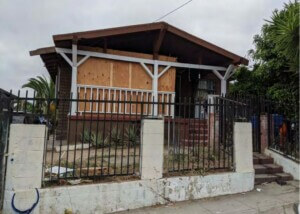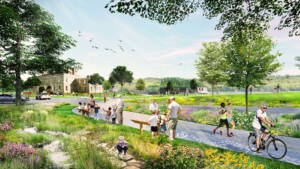A new addition to Downtown Los Angeles’s Broadway Theater District in the form of a 35-story condo tower premiered this spring in the former early-20th century entertainment wonderland. Perla on Broadway now rises where the ornate marquees of no less than a dozen surviving grand movie palaces, all built between 1910 and 1931 in an array of architectural styles ranging from Beaux-Arts to Zigzag Moderne, still announce themselves across a six-block stretch.
With 450 residences (starting at $449,000 for a studio just shy of 500 square feet) and 7,000 square feet of ground-level retail and commercial space, the complex is the first new high-rise to be constructed within the district—the first and largest historic theater district listed on the National Register of Historic Places—in over a century. Designed by CallisonRTKL for SCG America in the developer’s first ground-up California project, the building, which broke ground in September 2017, is also likely the last of comparable height and size to be constructed within Downtown LA..’s historic core for the foreseeable future due to strict restrictions on new development.
Perla on Broadway is composed of a slender tower perched atop a lanky podium roughly the same height as the neighboring buildings. Per city design guidelines within the historic district, the tower portion is set back 30 feet from the edge of the podium as to be tucked away from the street-level view.
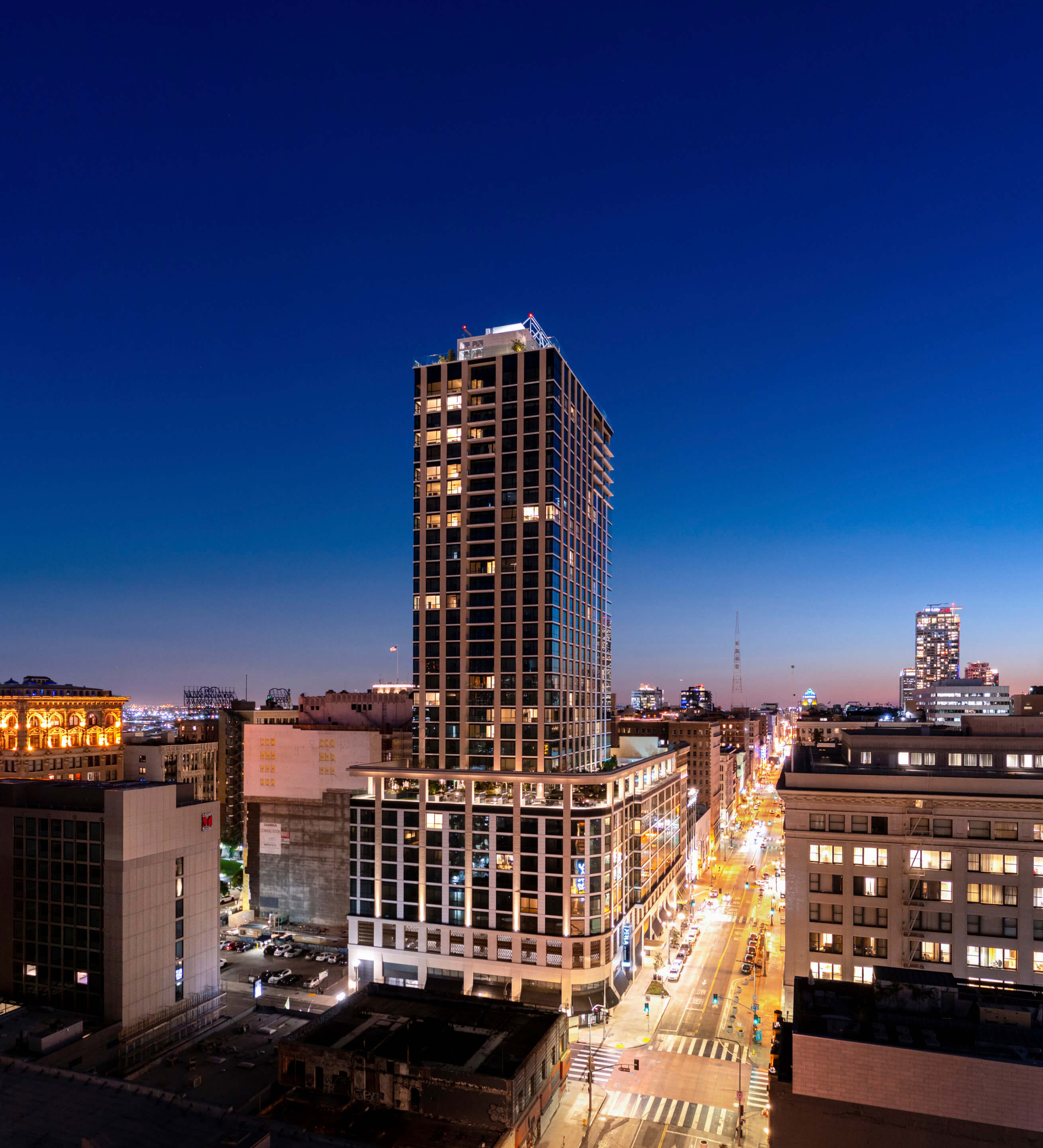
Perla’s closest neighbors at the corner of S. Broadway at the corner of West 4th Street include the Million Dollar Theatre (1918) and the Roxie Theatre (1931). Neighboring landmarks that aren’t old former movie palaces (or vaudeville houses and nickelodeons converted into movie palaces and decades later converted into Apple Stores) include Grand Central Market, Angels Flight, and the iconic 1893 Bradbury Building, which Perla pays homage to in its soaring, four-story central atrium topped by large skylights. Just as the Bradbury Building’s influence here is palpable, so is that of Broadway’s majestic movie palaces: floating balconies, a trifecta of shimmering decorative metal screens, and Art Deco touches courtesy project interior designer Hirsch Bedner Associates give the social space a throwback-y flair. Eugene Park, associate principal at CallisonRTKL, described the condo tower’s inner court as being “like a theater of life.”
As Park explained to AN, the open central court was created largely out of necessity due to the building’s sizable setback. “The interior atrium is sort of part of the code requirement that you have to set back the tower a lot from the very big podium,” he said, noting the large amount of dark interior space created by the setback.
Outside, the building tips its proverbial hat to its neighbors with an exterior wrapped in a layered “tapestry” of glass, metal, and glass fiber reinforced concrete panels that “recreate the depths and the rhythms of nearby historic facades,” according to the design team.
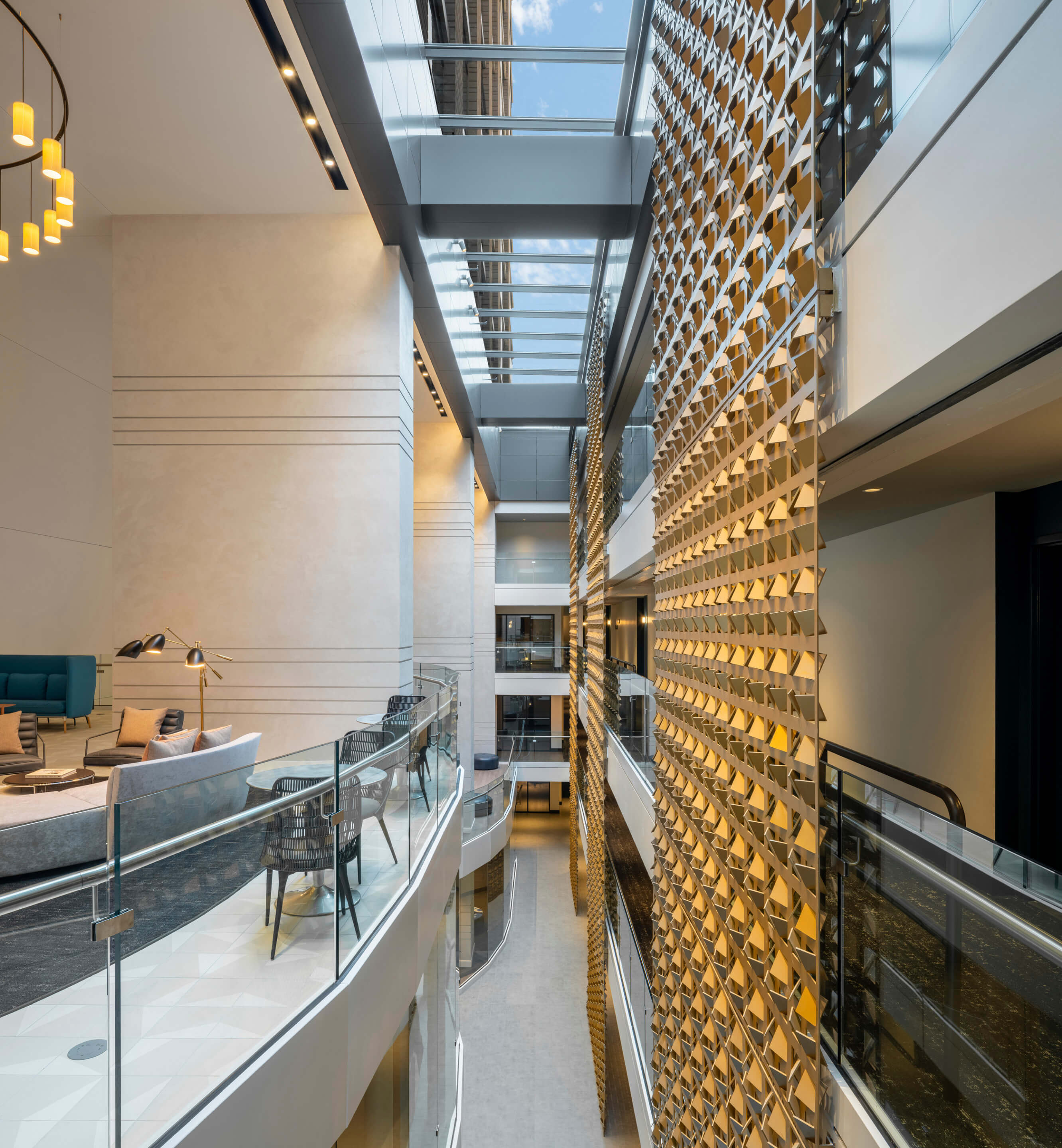
“In broad strokes, the vocabularies on the facades are reminiscent of the architectural details, textures, and proportions found in the historical neighborhood, executed in a contemporary manner utilizing contemporary materials and technology,” elaborated Park in a statement. “From the cornice lines, to the vertical rhythms of the colonnades, to the proportions of the windows and the color of the mullions, there are various facets of design that reference its place, from the large-scale elements down to the smallest details.”
High above the street, amenities include 49,000 square feet of open outdoor space, the handiwork of Studio MLA, on three levels: a seventh-floor garden terrace, a sprawling 11th-floor main terrace complete with swimming pool and open lawn space, and a 36th-floor rooftop deck with cabanas, fireside lounges, and other spots to take in the views from atop the tall (for the immediate area) tower.
“It’s a wonderful space,” said Daun St. Amand, senior vice president at CallisonRTKL’s L.A. office and leader of the firm’s residential sector, of the podium-topping terrace. “It gives a sense of enclosure and frames the historic context of the adjacent buildings.”
Perla also benefits from a robust art program headed by Annie Wharton Art Consulting: 33 new commissioned works, including paintings, photography, sculpture, and more, are distributed throughout the building’s public spaces, with 90 percent the creations of women and BIPOC artists, all 22 of whom are L.A.-based.
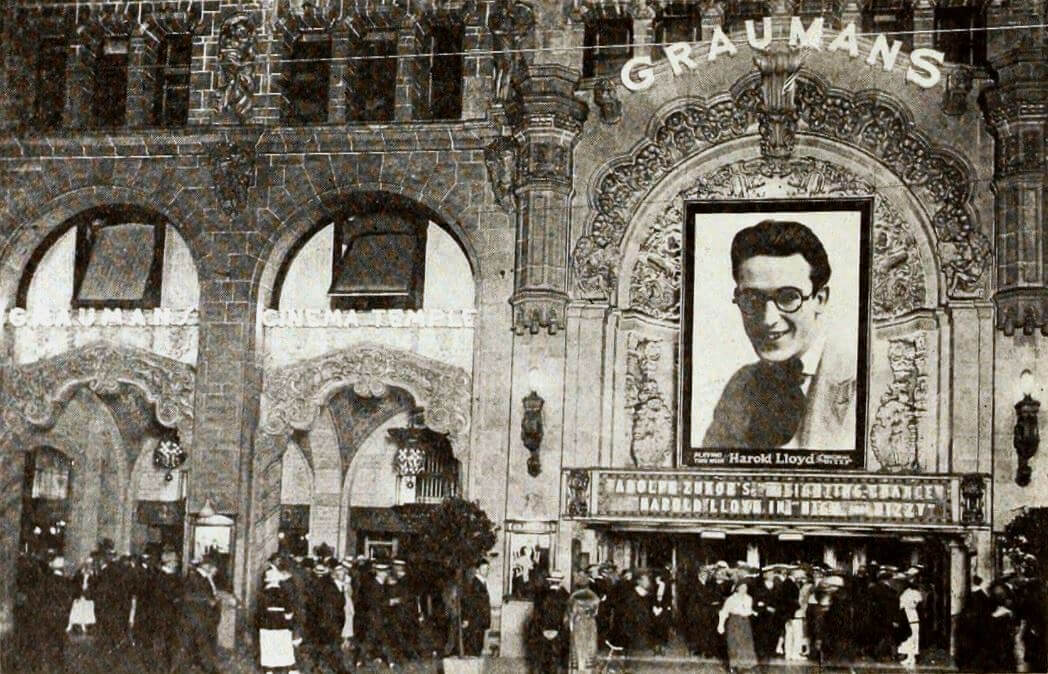
SCG America contributed over $2 million for streetside improvements along Broadway and 4th Street under the City of Los Angeles’ Broadway Theater and Entertainment District Guidelines as well as a $4 million community benefit package to Bringing Back Broadway, a city-led revitalization initiative launched in 2008. Save for a modest handful of notable exceptions made possible by major restoration efforts, the neighborhood’s movie palaces and entertainment venues that survived demolition over the decades have long since closed. While some sit vacant, most have been converted for other uses including indoor swap-meets, discount clothing stores, and churches, all of which comprise a bustling Latino retail zone that some worry will fade away as the luxury residential-driven metamorphosis of Downtown L.A. continues apace. Perla, a rare exception to the myriad commercial and residential adaptive reuse projects that have reinvigorated the neighborhood’s historic core, replaces what St. Amand described as a “one-story retail building with parking on the roof.”
As for any iconic signage that will lend the Perla a touch of visual oomph alongside Broadway’s flamboyant theater marquees, that’s still in the works. “It wasn’t part of the design from the very beginning, but the client requested we look at the possibility of signage—a lot of historic buildings in Downtown L.A. have large signage pieces,” said Park. “As of now, [the top of] the building is sort of half-finished without a sign.”








